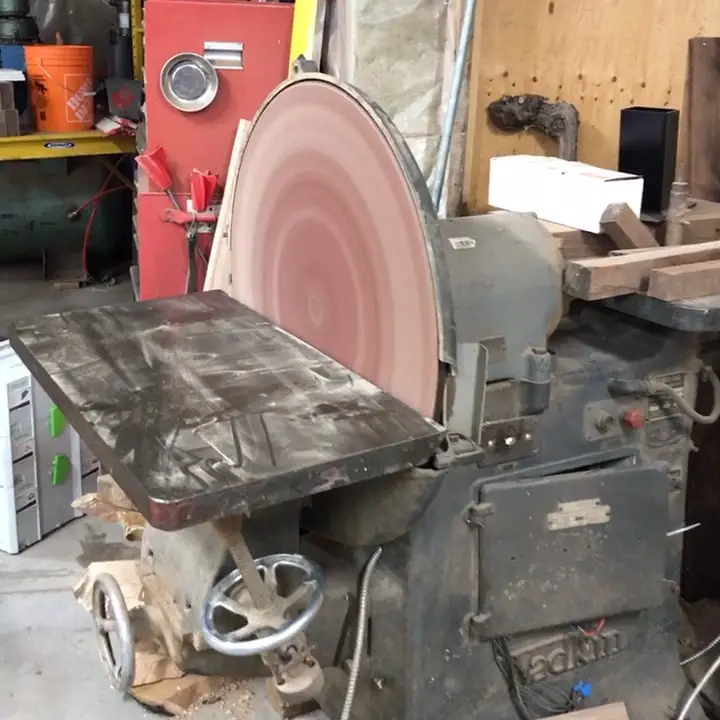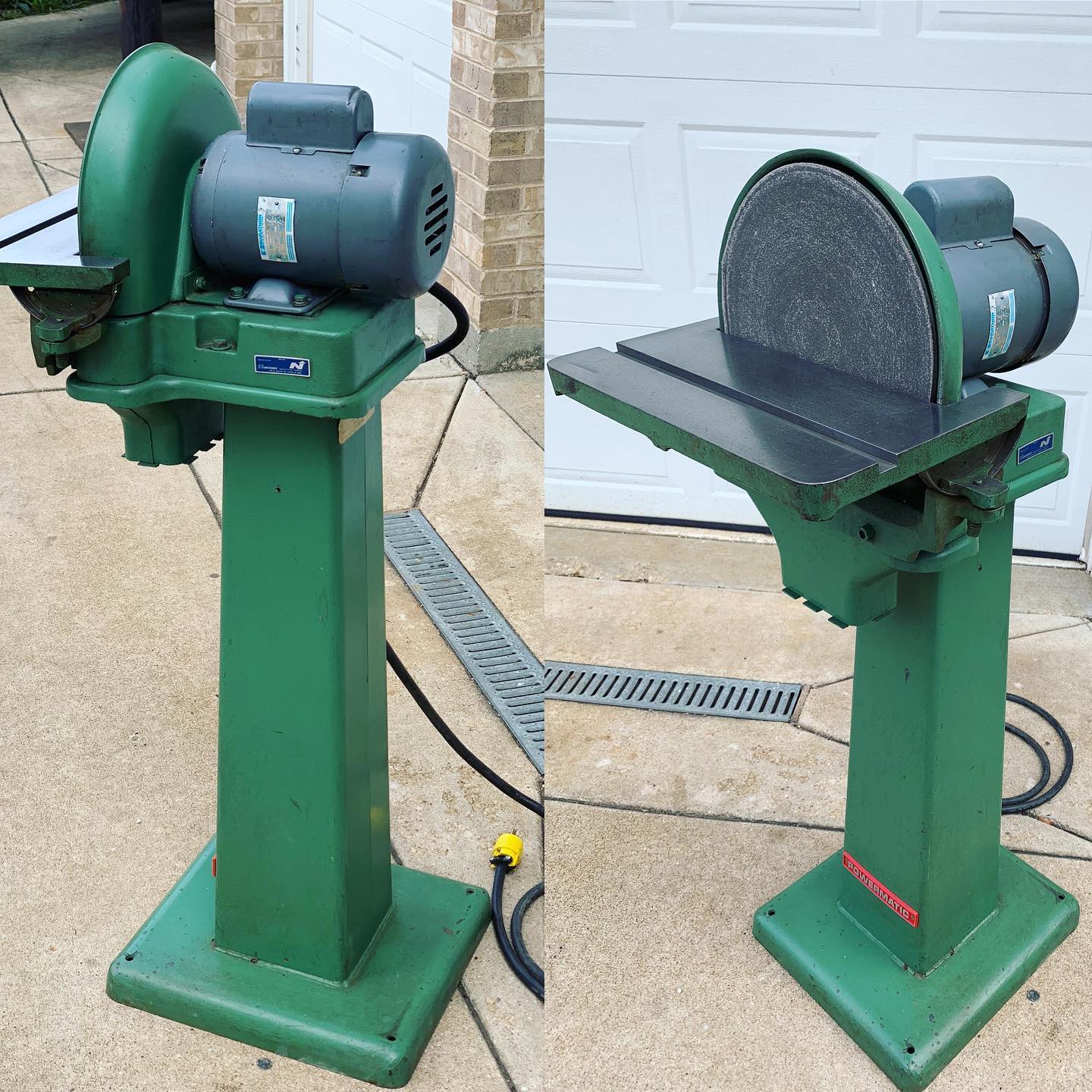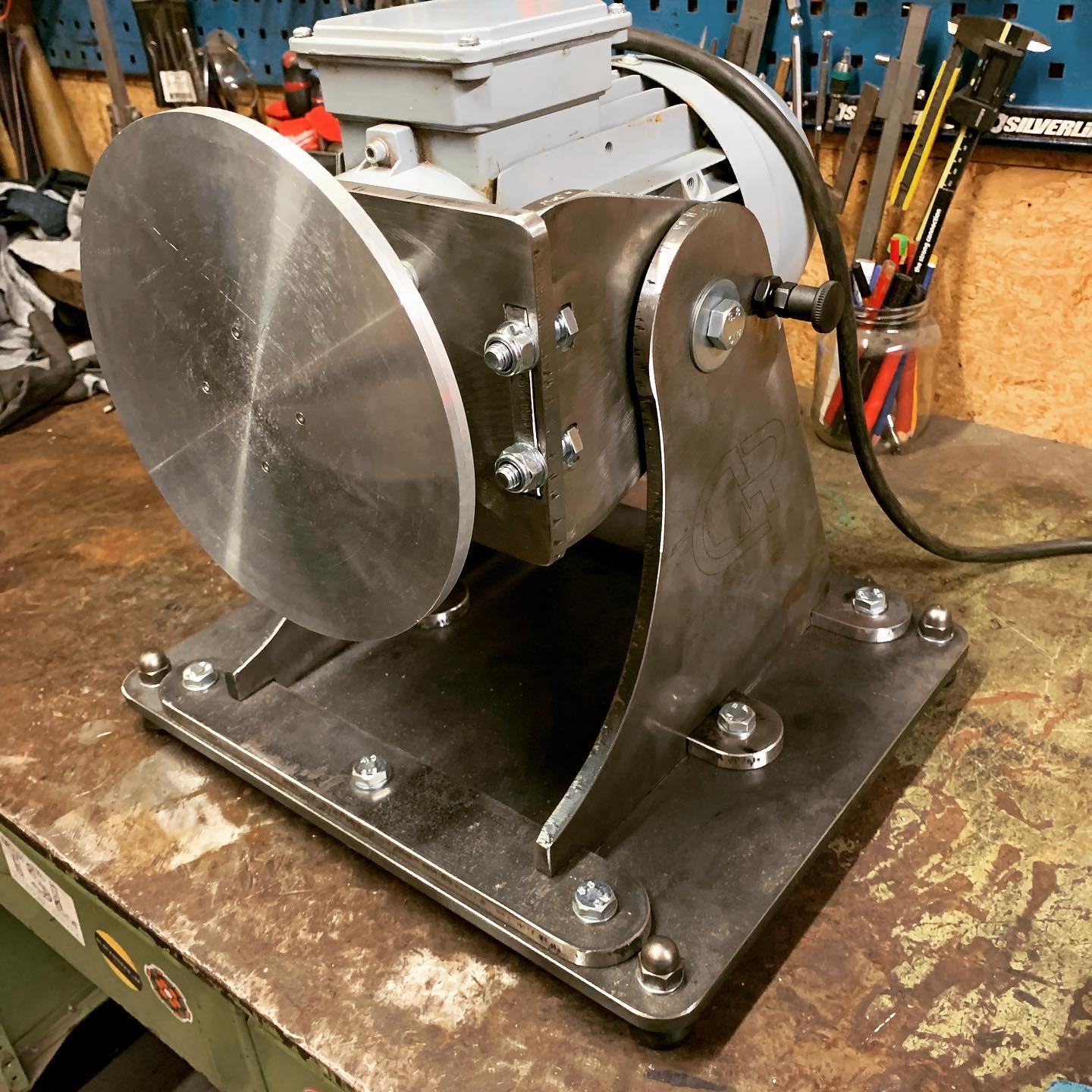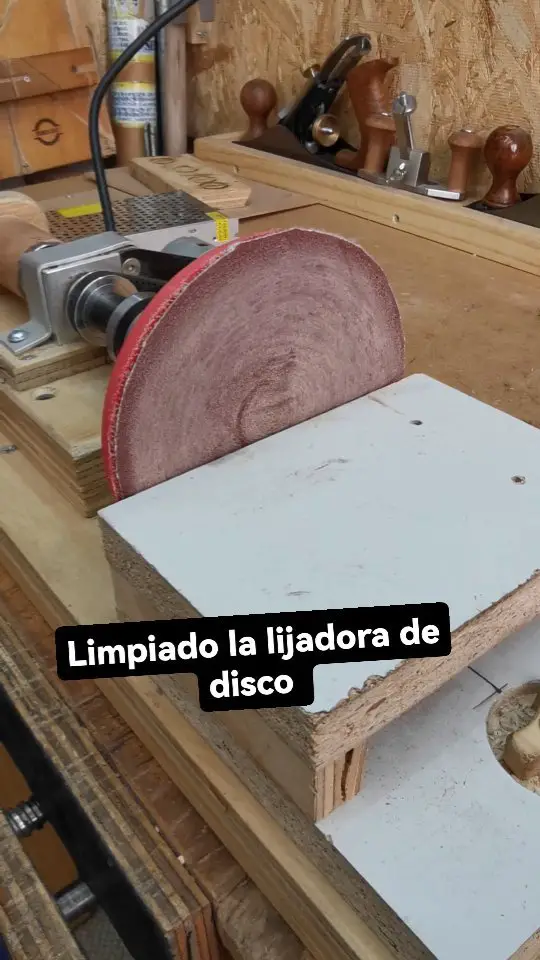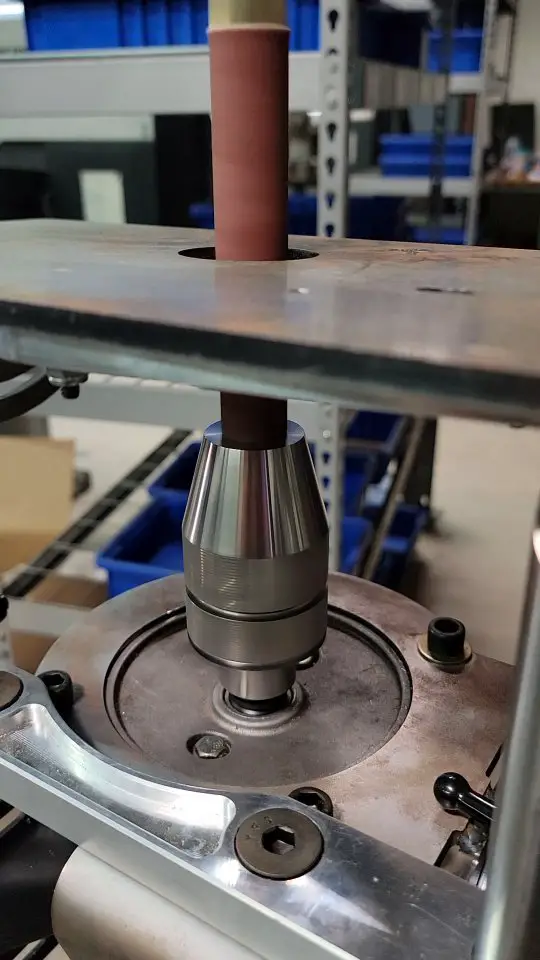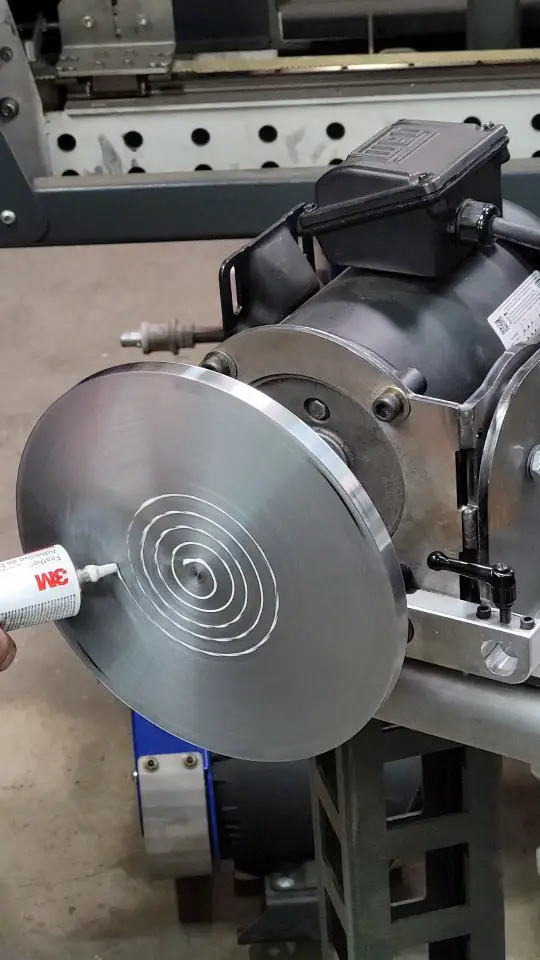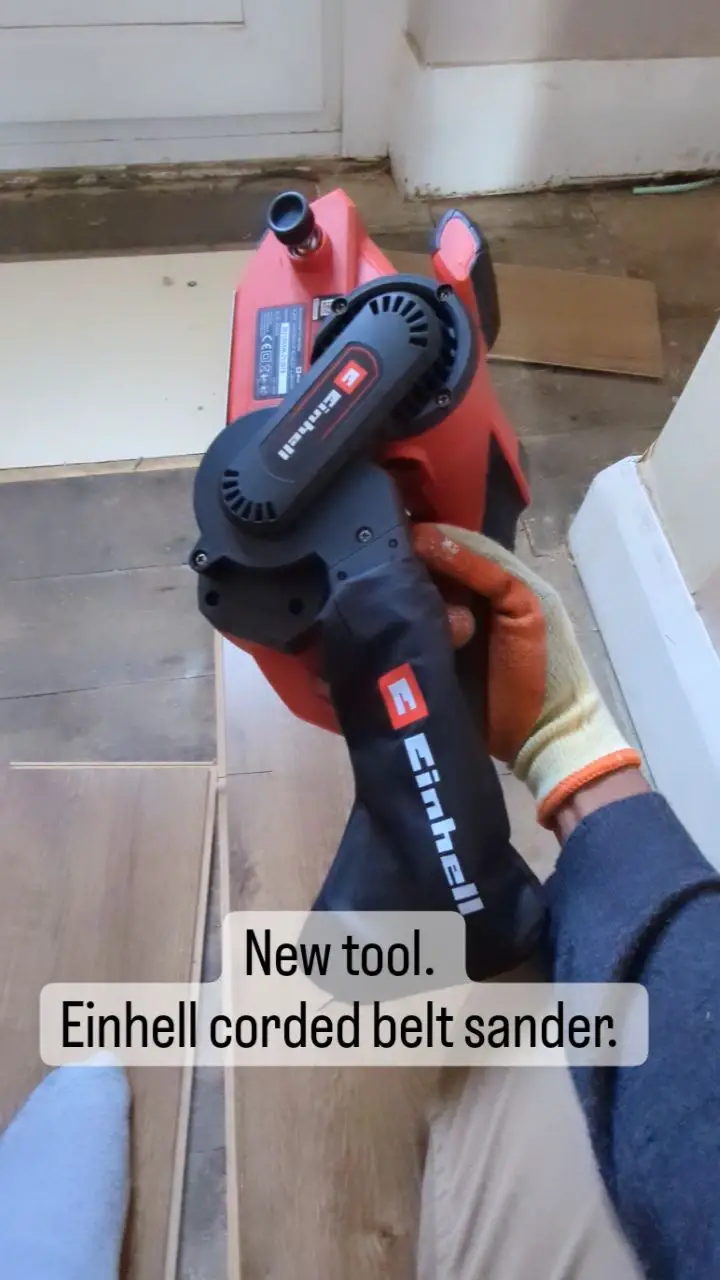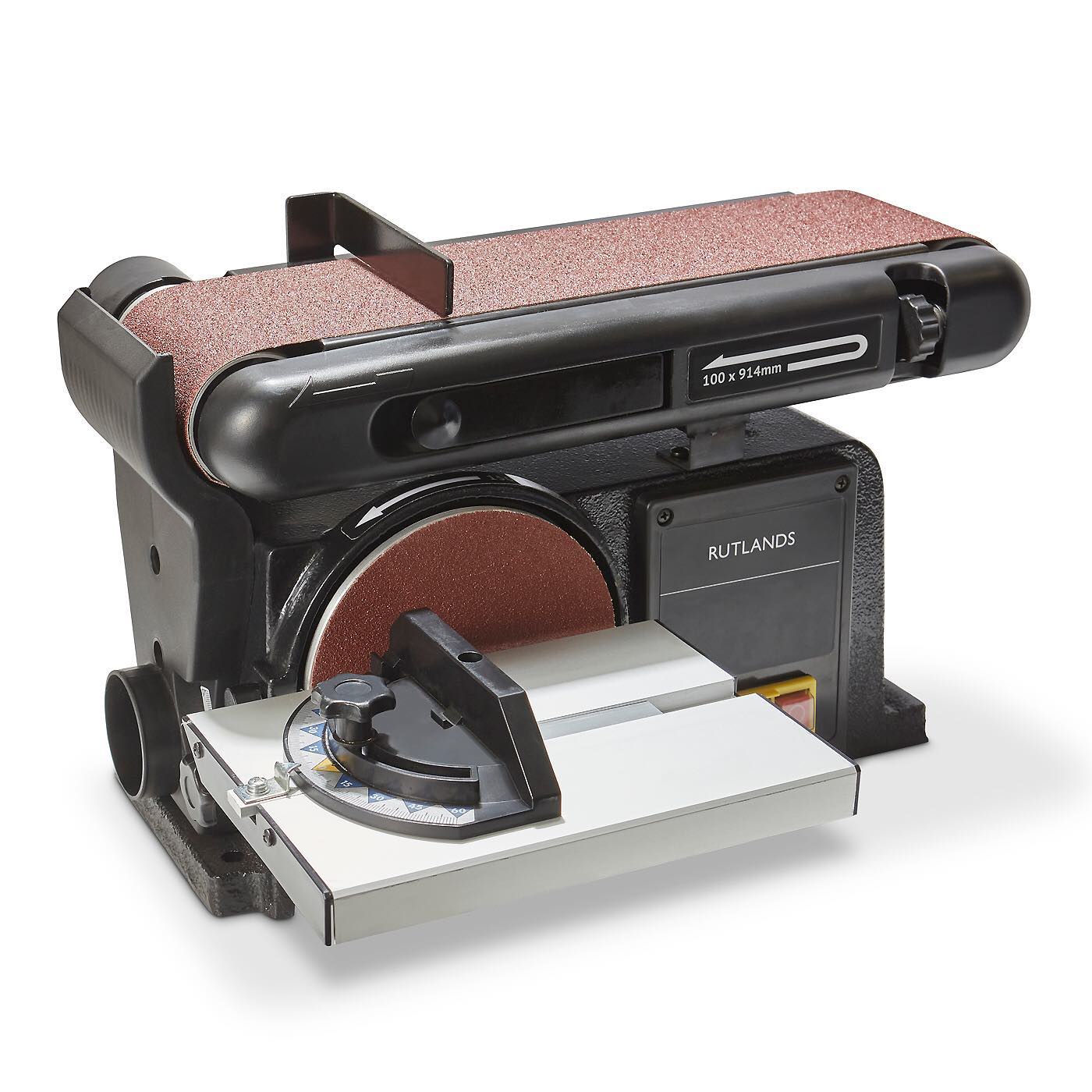Disc Sander vs Belt Sander [Differences & Pros Cons]
Woodworkers rely on power sanders to smooth and shape wood quickly and efficiently. The two most common types are disc sanders and belt sanders. Both have distinct advantages and disadvantages depending on the sanding application. This comprehensive guide examines the key differences between disc and belt sanders to help you decide which is better suited for your woodworking needs.
What is a Disc Sander?
Key Features of a Disc Sander
- Rotating circular sanding disc: The main sanding surface is a circular disc that spins rapidly during operation. Disc sizes typically range from 5-12 inches in diameter. Larger discs can smooth wider surfaces faster.
- Adjustable table: Disc sanders have a flat table that supports the workpiece near the sanding disc. Better models allow you to bevel the table to sand angled edges.
- Dust collection: Most disc sanders connect to a shop vacuum to contain dust. Some have enclosed dust ports around the disc for more efficient dust pickup.
- 1/3 to 1 HP motor: Disc sanding requires less power. Motors range from 1/3 HP for basic 5″ models to 1 HP for heavy-duty 12″ disc sanders.
- Single sanding station: Disc sanders only have one sanding surface – the spinning disc. You can quickly swap discs for coarser or finer grits.
- Compact size: The circular sanding design allows disc sanders to be relatively small, often only taking up single square feet of shop space.
Disc Sander Images
What is a Belt Sander?
Key Features of a Belt Sander
- Continuous sanding belt: The main sanding surface is an endless loop abrasive belt that rotates at high speeds around two drums. Common belt sizes range from 3×18″ to 4×36″.
- Conveyor-belt action: As the belt rotates, it moves over the work surface like a conveyor belt. This allows you to feed the workpiece linearly against the moving belt.
- Platen for support: Belt sanders have a flat metal platen opposite the rear drum to support the back of the workpiece as you sand against the belt. Platens often pivot to sand angled workpieces.
- 1+ HP motor: The continuous belt requires more powerful motors than disc sanders, typically starting around 1 HP and ranging up to 5+ HP for heavy stationary models.
- Multiple grits at once: Wider belts can have sections with different grits, like 80 grit on one end graduating to 120 grit on the other.
- Larger size: Belt sander bodies need to be long enough to tension the belt, so they have a larger footprint than disc sanders.
Belt Sander Images
Main Differences Between Disc and Belt Sanders
Now that we’ve covered the key features and capabilities of each type, let’s compare them directly to reveal the main differences:
Sanding Motion
- Disc sander: Unidirectional circular motion around the disc. Grit rotates in one direction under the workpiece.
- Belt sander: Linear motion along length of the belt. Grit moves in linear path under workpiece.
Sanding Orientation
- Disc sander: Workpiece is perpendicular to the disc face. Only edge/face sanding is possible.
- Belt sander: Workpiece is parallel to belt movement. Can edge sand or face sand depending on workpiece orientation.
Power
- Disc sander: Typically lower powered motors less than 1 HP. Enough for light stock removal.
- Belt sander: More powerful 1 HP+ motors. Better for aggressive sanding/stock removal.
Sanding Area
- Disc sander: Small circular sanding area defined by disc size, usually 5-12 inches max.
- Belt sander: Large rectangular sanding area determined by belt length/width, typically 18-36″ long.
Dust Collection
- Disc sander: Partially enclosed disc requires shop vac for dust pickup. Significant dust escapes around disc.
- Belt sander: Fully enclosed belt creates less escaping dust. Some have built-in dust collectors.
Number of Grits
- Disc sander: Limited to a single grit at a time. Discs must be changed to switch grits.
- Belt sander: Wider belts can have multiple grit zones, allowing grit changes on the fly.
Learning Curve
- Disc sander: Very simple machine with a flat fixed table. Easier for beginners to learn.
- Belt sander: More adjustments and versatility require practice to master techniques. Steeper learning curve.
Cost
- Disc sander: Compact simple construction makes most models relatively affordable at $100-250.
- Belt sander: More parts/materials needed typically makes them cost $150-500+. Heavy-duty industrial belt sanders can cost thousands.
So in summary, disc sanders provide a small fixed sanding area powered by a low-output motor, while belt sanders offer larger sanding capacity via a continuously moving belt driven by a more powerful motor.
Now let’s dive deeper into the strengths and limitations of each design.
What are Disc Sanders Best For?
Thanks to their spinning circular sanding action, portable size, and ease of use, disc sanders excel at these key tasks:
Smoothing Curves and Contours
The circular sanding disc evenly abrades concave and convex curves along the entire edge of the workpiece. The smooth continuous motion prevents uneven scratches or ridges. The small disc is very maneuverable for smoothing inside curves and contours.
Sanding Circles and Arcs
The rotating disc action lets you precisely trace rounded arcs or sand a shaped disc/ring down to a perfect circle. A disc sander is a must-have tool for any curved work.
Removing Saw Marks on Edges
The rapid uni-directional grit quickly sands off saw blade marks on the edges of lumber or plywood. The smooth edge also prevents splinters and tear out on further cuts.
Detail Sanding Small Parts
The compact size and precision of a disc sander makes it ideal for working with small parts. The instant-stopping abrasive disc gives great control for detail sanding parts to final tolerances.
Sanding Veneers or Thin Stock
The light material removal action of a disc prevents burning through thin stock. The fine grit discs are perfect for sanding fragile wood veneers down to a smooth finish.
Accessing Tight Areas
The compact circular disc can sand concave areas that would be hard to reach with a large belt sander. The smaller sanding area gives more precision on confined spaces.
Overall, disc sanders are simple to use for smoothing curves, sanding rounded edges, removing saw marks, detail sanding small parts, working with thin stock, and accessing tight spots.
What Are Belt Sanders Best For?
Meanwhile, belt sanders are the powerhouse workhorse for rapid stock removal thanks to these capabilities:
Aggressive Bulk Sanding
The powerful belt motor paired with wide coarse grits aggressively removes substantial material quickly. This makes belt sanders perfect for flattening rough lumber.
Sanding Large Flat Surfaces
The broad sanding belt can smooth panel stock wider than the small disc on a disc sander. Good for sanding tabletops, doors, and other large flat projects.
Sanding 90-Degree Angles
Drum sanders struggle to sand a perfect 90-degree inside corner. A belt sander belts allows you to precisely sand into a square angle.
Sanding with the Grain
The linear belt motion makes it easier to sand in the direction of the wood grain to avoid cross-grain scratches.
Flattening Warped Wood
The combination of power and wide sanding capacity lets a belt sander forcibly remove high spots and twist to flatten cupped or warped boards.
Shaping and Tapering
By angling the belt sander on edge, you can bevel or taper the face of a workpiece in a controlled manner. The linear abrasion creates precise shaping.
Sanding Inside Recesses
While less maneuverable than a disc, belt sanders can access deeper hollows like mortises thanks to the linear travel of the grit.
For heavy stock removal, wide flats, precision 90-degree angles, grain smoothing, flattening, shaping, and interior sanding – belt sanders are the optimal choice.
Disc Sander vs Belt Sander: Which is Better for Fine Sanding/Finishing?
When it’s time for final smoothing and fine sanding before finishing, disc sanders have some advantages over belt sanders:
- The compact, maneuverable disc allows detailed sanding in tight spots or hollows that a belt can’t reach.
- Disc grit rotates slower than a fast belt which can burn delicate stock when not used carefully.
- Enclosed disc design contains more dust for clean sanding. Open belt throws more debris on the workpiece.
- Cheap disc paper is fine for light final sanding while belts require higher-quality grit.
- Disc changes are fast for switching paper grades. Belts take longer to change and replace.
- Unidirectional disc motion creates a smoother uniform scratch pattern. Bidirectional belt movement leaves more swirl marks.
The more precise sanding of a disc sander creates a better foundation for applying your final finish.
Disc Sander vs Belt Sander: Which is Better for Metalworking?
Both disc and belt sanders can be used on metal for grinding, deburring, chamfering, and buffing when paired with proper abrasive grits and compounds.
For metal tasks, belt sanders tend to be the better choice:
- More powerful belt motor and aggressive action removes metal stock faster.
- Variety of grits can be installed on wider belts for coarse grinding to fine polishing.
- Added features like platen tilts, work stops, and backer pads aid metal sanding.
- Metal dust collects cleanly in enclosed belt housing instead of flying around a disc.
However, disc sanders still play a role for metalworking in certain cases:
- Smoothing curved metal edges like tubes, rods, and rings.
- Accessing confined spaces like the inside of pipe fittings.
- Quickly chamfering holes and hardware.
- DIY buffing and polishing with lower-powered motors.
For serious shaping, grinding, and finishing metal, opt for a belt sander. But keep a disc sander on hand for specialty metal sanding scenarios.
What are the Limitations of Disc Sanders?
While they excel at detail sanding, disc sanders do have some limitations to consider:
Only Edge/Face Sanding
Discs can only sand surfaces parallel to the face – you cannot sand ends or tops. Belt sanders allow more sanding angles.
Prone to Tilting/Tipping
Aggressive sideways pressure while sanding can torque the light disc machines and make them tip. Always brace securely.
Inconsistent Disc Speed
Cheaper models, worn motors, and overloaded circuits can cause the disc rpm to bog down during sanding.
Small Sanding Area
The compact circular disc prevents sanding larger workpieces. Average 5-9″ size limits surface area.
Slower Material Removal
Low-power motors and fine grits mean disc sanders are not made for rapid stock removal.
Exposed Abrasive
Lack of belt housing allows dust to escape. Significant cleanup required. Breathing protection recommended.
While excellent for detail work, the design of disc sanders restricts the stock removal rate, sanding angles, workpiece size, and dust collection.
What Are the Limitations of Belt Sanders?
Belt sanders are powerful but do have some downsides:
Difficult on Irregular Shapes
The flat rectangular belt works well on flat stock with straight edges. Struggles on highly curved or contoured surfaces.
Leaves Swirl Marks
Bidirectional grit travel causes swirl patterns on the work surface. Requires an extra pass with a disc sander to remove.
Creates Edge Roundover
A new belt with square edges will quickly round over the edges of a workpiece. Lighten pressure to avoid.
Requires Two Hands
Controlling a handheld belt sander takes two hands. One to guide, and one to stabilize on the workpiece.
Messy Open Design
Dust escapes the back and below the belt. Some contain better than others but still messier than a disc.
Aggressive and Unforgiving
High sanding power demands care. A moment of inattention can create deep gouges in your workpiece.
The size, power, and grip of belt sanders make them trickier for finesse work, rounding edges, producing swirls, and containing dust.
Advantages of Owning Both Sanders
Given the pros and cons of disc and belt sanders outlined above, there’s a strong case to be made for owning both:
- Disc for detailed fine sanding, curves, small parts.
- Belt for fast stock removal, wide surfaces, inside angles.
- Disc to remove belt swirl marks and roundovers.
- Belt for initial dimensioning of lumber and flattening.
- Disc for final smoothing before finishing.
- Belt for major material shaping before disc finessing.
Used together in sequence, you can take full advantage of the strengths of each sander type for a streamlined two-stage sanding process.
Recommended Combo: 6″ Disc + 3″ x 21″ Belt
A good starter pair would be:
- 6″ disc sander like the WEN 6502 (around $100).
- 3″ x 21″ belt sander like the Makita 9403 (around $150).
The small but powerful disc excels at tight contours and curves. The compact belt handles minor stock removal on boards under 12″ wide. Both are inexpensive benchtop models good for hobbyists.
Upgrading to larger 8″ or 12″ disc sanders and 4″ x 24″ belt sanders will provide more sanding capacity for bigger projects.
No matter what size you choose, owning a disc and belt sander duo will provide the versatility to handle small to large sanding tasks with finesse and power.
Features to Look for When Buying
To compare disc and belt sanders during purchase, keep these key features in mind:
Disc Sanders
- Disc diameter
- Table bevel adjustments
- Dust collection design
- Motor power
- Sturdy steel construction
Belt Sanders
- Belt width and length
- Variable belt speed
- Tracking adjustment
- Platen adjustments
- Dust collection ports
- Comfortable grip
Buy the most powerful disc and belt sanders you can reasonably afford. Pay for quality since they are investments that should last years if properly maintained. Cheaper models often sacrifice performance and durability.
Safety Tips
Disc and belt sanding involve spinning abrasives at high speeds, so safety should be paramount:
- Wear eye and ear protection. Use a dust mask as well for belt sanders.
- Check for damage and replace worn sanding belts/discs.
- Allow sanders to reach full speed before sanding.
- Apply light pressure and don’t force either machine.
- Support workpiece near the abrasive with the table.
- Turn off and allow the disc/belt to stop before setting them down.
- Unplug when changing belts/discs or adjusting the machines.
- Ensure good workpiece clamping and footing. Belt sanders can tip easily.
- Clean dust buildup which can hinder performance and cause overheating.
Follow all manufacturer safety instructions. Remember that a moment of inattention can lead to accidental gouging or injury.
Maintenance Tips
With proper care disc and belt sanders will deliver years of smooth sanding:
Disc Sanders
- Blow out dust using compressed air.
- Lubricate the motor bearings every 6 months.
- Check the disc mount and backing pad for wear.
- Use quality sanding discs to avoid unevenness.
Belt Sanders
- Check belt tracking and tension.
- Clean dust buildup on rollers and housing.
- Inspect belts for damage like cracking.
- Change belts once they round over or wear thin in the middle.
- Lubricate platen guide rods.
Follow all manufacturer maintenance tips to keep the abrasives turning true and motors running cool.
Conclusion
Disc and belt sanders utilize distinct grit motions powered by different motor sizes to excel at particular sanding tasks.
Disc sanders are compact, easy to use, and ideal for smoothing contours, curved edges, small parts, and fine detail sanding.
Belt sanders aggressively remove material with their powerful linear abrasion action perfect for flattening, shaping, sanding inside angles, and covering large surfaces.
Owning both in a woodshop provides the right sander for any job. Start with a belt sander for dimensioning lumber, major stock removal, and achieving 90-degree angles. Switch to the disc sander for smoothing out swirl marks and dialing in a fine smooth finish.
Carefully selecting models with quality steel construction, dust collection, and safety features will help you get the most out of your disc and belt sanders for years of smooth frustration-free sanding.
